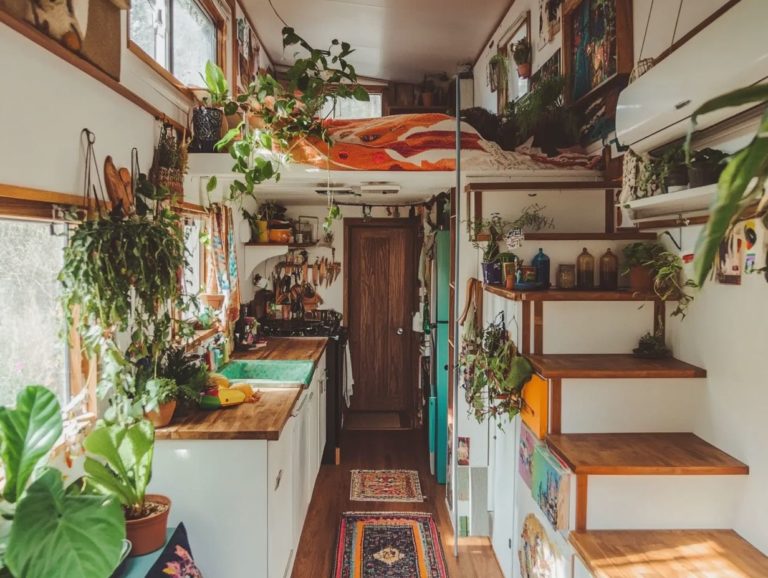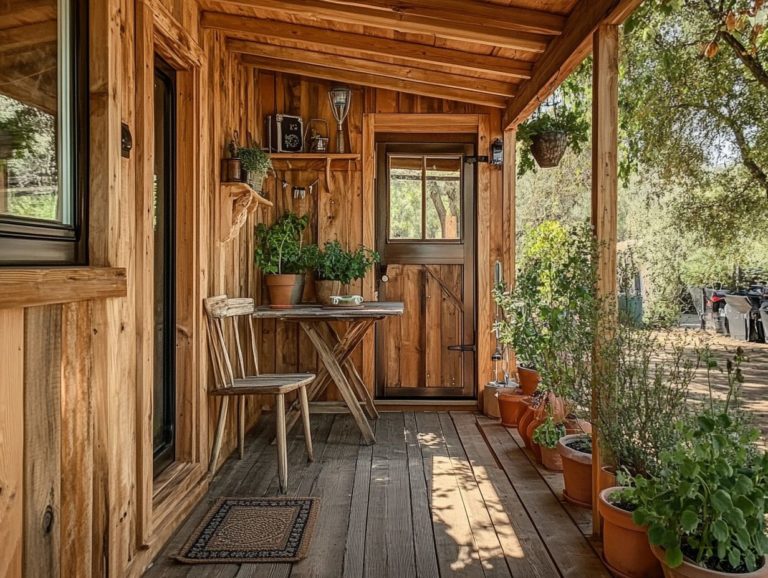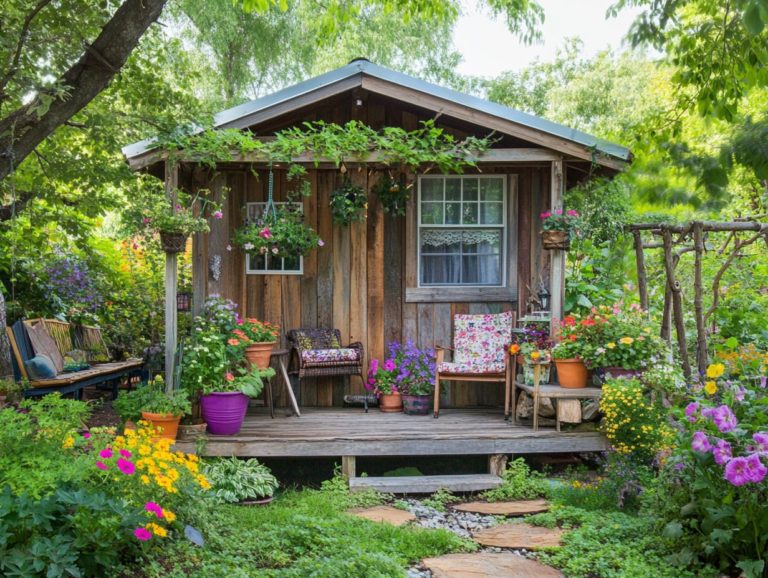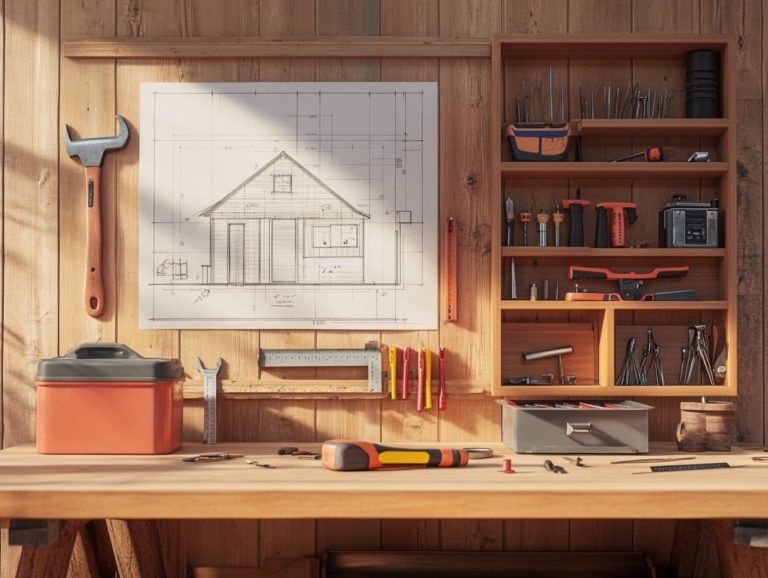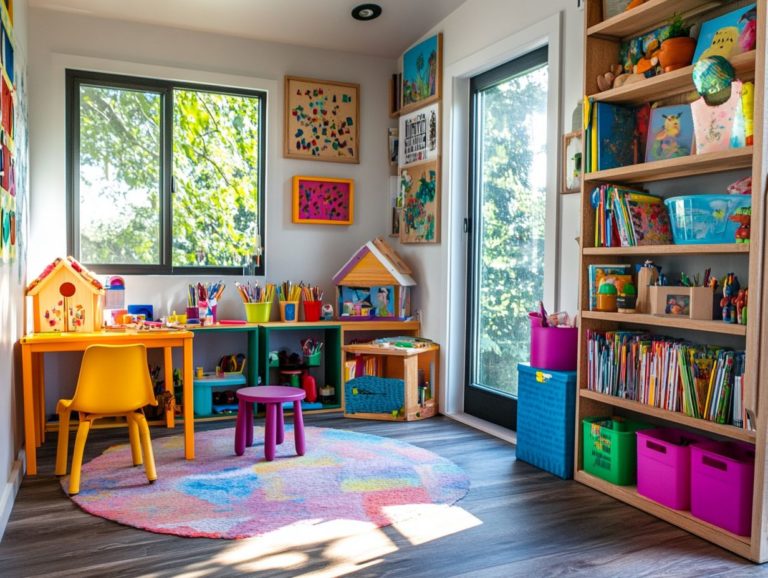Creating a Tiny House Community Space: DIY Guide
Tiny house communities are more than just a fleeting trend; they embody a significant shift towards sustainable living and shared spaces that nurture genuine connections.
Let s dive into the incredible benefits of community spaces! This exploration highlights the positive impacts for both residents and the broader neighborhood.
You ll gain insights into essential planning and design considerations, as well as eco-friendly materials and construction techniques that will guide you through the entire process.
Discover how to actively engage residents in the planning phase and ensure the long-term upkeep of this distinctive living environment. Whether you are a tiny house enthusiast or simply intrigued by the concept of communal living, this guide is filled with valuable insights tailored just for you.
Contents [hide]
- Key Takeaways:
- Benefits of Creating a Community Space
- Planning and Designing the Community Space
- Materials and Construction Techniques
- Collaborating with Community Members
- Maintaining and Sustaining the Community Space
- Frequently Asked Questions
- What is a Tiny House Community Space and why should I create one?
- Do I need any special skills or knowledge to create a Tiny House Community Space?
- What are some essential elements to consider when creating a Tiny House Community Space?
- How can I involve the community in the process of creating a Tiny House Community Space?
- What are some budget-friendly ways to create a Tiny House Community Space?
- How can I ensure the sustainability and longevity of a Tiny House Community Space?
Key Takeaways:
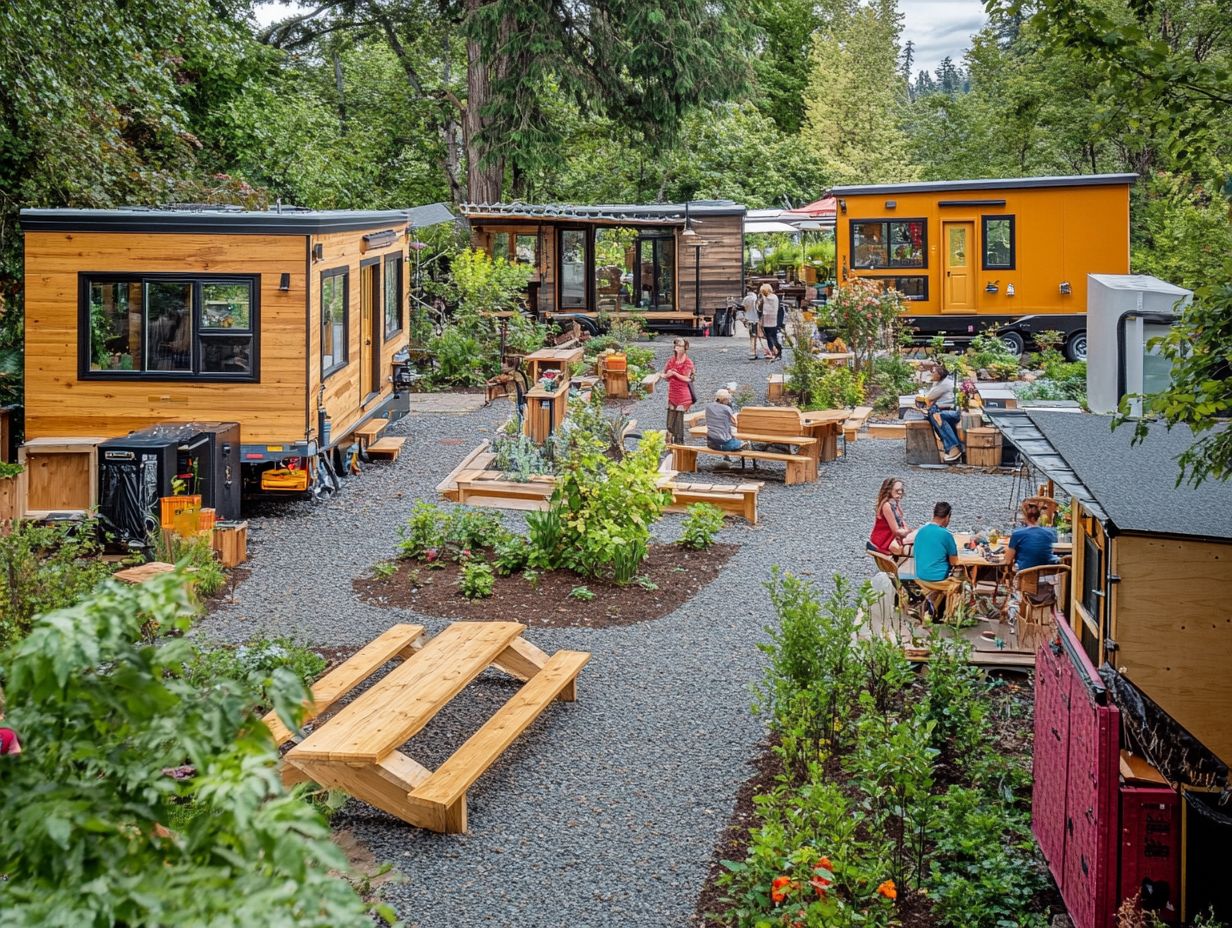
- Transforming a tiny house community into a vibrant and thriving space can positively impact both residents and the larger community.
- Proper planning, creative design, and collaboration with community members are crucial for creating a sustainable and cost-effective community space.
- Regular maintenance is essential, and involving residents, such as veterans and single parents, in the process is vital for sustaining a successful and welcoming tiny house community space.
What are Tiny House Communities?
Tiny house communities offer a fresh perspective on affordable housing, prioritizing sustainable living and minimalism. Here, you can realize your dream of homeownership through shared values and active community engagement.
Often comprised of tiny homes built on mobile platforms, these residences utilize eco-friendly materials that comply with local building codes and zoning laws. This creates spaces that foster a genuine sense of belonging while aligning with the rising trend of minimalist lifestyles. For those interested in this lifestyle, exploring tiny house communities: a guide for beginners can provide valuable insights.
By allowing you to downsize your living space while maximizing functionality, these communities play a significant role in reducing your overall environmental footprint, or the impact your home has on the planet. They present a real option to address the housing crisis, catering to diverse populations, from young professionals to retirees, as highlighted in tiny house communities: a sustainable living option.
The close-knit nature of tiny house communities encourages local engagement and support, often featuring communal resources like gardens and shared facilities. By championing sustainability and innovation, these communities challenge traditional housing models. They demonstrate how thoughtful design can harmonize with affordable living, ensuring adherence to regulations while nurturing a collective ethos rooted in environmental stewardship.
Benefits of Creating a Community Space
Building a tiny home community offers a wealth of advantages, from heightened community engagement to lower energy expenses. It presents an inviting opportunity for residents to partake in shared gardens, which further enriches the principles of sustainable living and affordable housing initiatives.
These spaces do more than just house individuals; they cultivate relationships among residents and foster a collective ethos centered on sustainability and social responsibility.
Positive Impact on Residents and the Community
Tiny home communities significantly encourage community engagement and foster relationships among residents. This not only enhances your overall quality of life but also provides access to affordable housing solutions.
The dynamic within these communities promotes interaction, collaboration, and the collection of feedback, which in turn leads to sustainable practices that benefit both individuals and the greater environment.
In this close-knit atmosphere, you’ll find opportunities to form lasting friendships, share resources, and participate in communal activities, all of which strengthen social ties.
Affordable housing is a cornerstone of these communities, enabling diverse groups including low-income families and young professionals to secure stable living situations.
As residents unite to voice their needs and ideas, they actively shape initiatives that improve their living spaces and bolster the resilience of the surrounding community. This kind of engagement fosters a sense of ownership and responsibility, creating a model of harmonious living that can inspire similar projects elsewhere.
Ready to join the tiny house movement? Start planning your community today!
Planning and Designing the Community Space
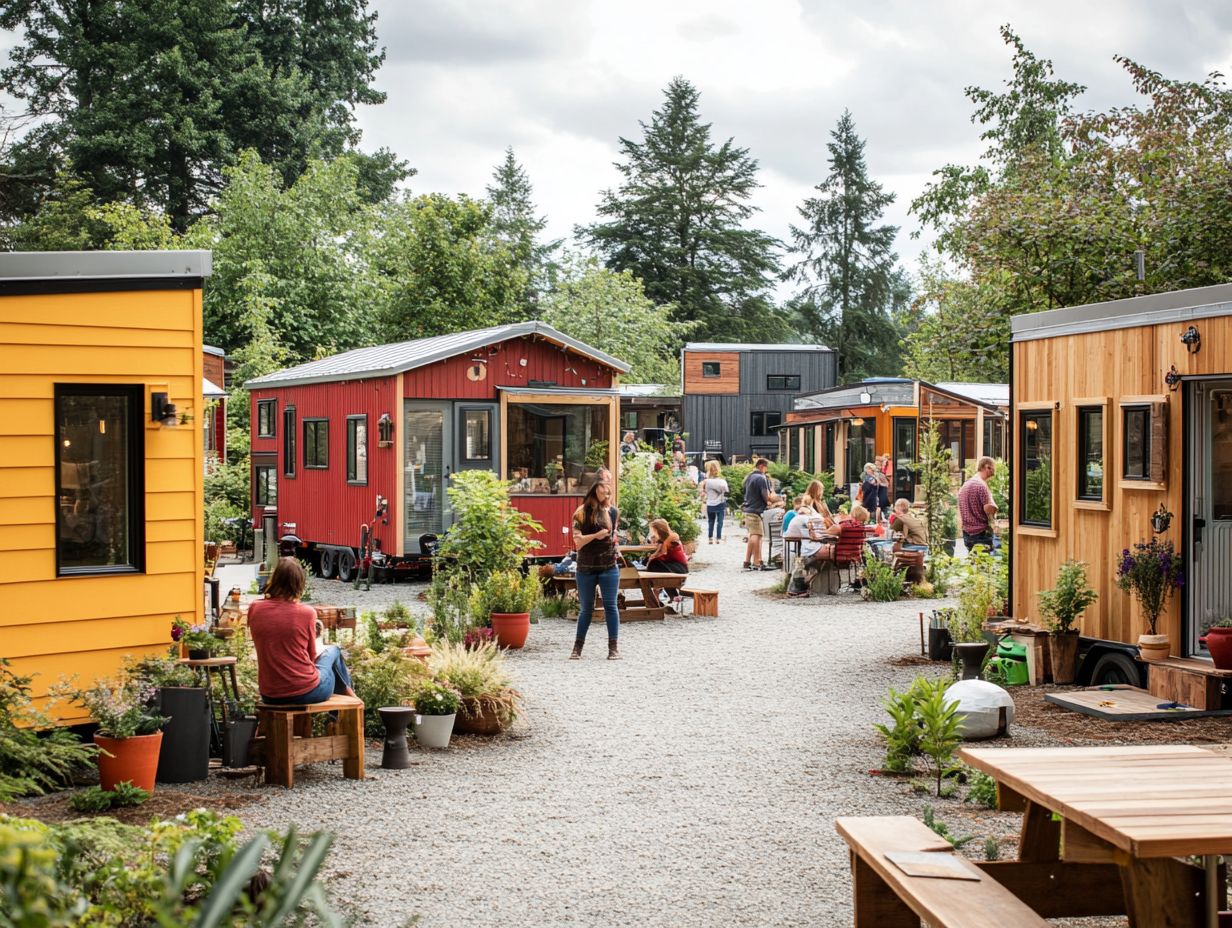
When you plan and design a tiny house community, meticulous attention to detail is essential. You ll want to ensure compliance with building codes and zoning laws. It’s important to seamlessly integrate the needs and preferences of residents to cultivate a harmonious community space.
This process often invites DIY projects. Residents have the opportunity to actively contribute to the layout and aesthetics. For those interested in sustainable building, learning how to build a tiny house using sustainable practices can enhance their sense of community. Such involvement fosters a profound sense of ownership and belonging within the community.
Factors to Consider and Tips for Designing
When designing a community space for a tiny home community, several key factors must be considered. You need to think about compliance with building codes, zoning laws, the selection of construction materials, and eco-friendly choices.
These elements make your design functional. They also align with the community’s values of minimalism and caring for the environment.
It’s crucial to pay close attention to local regulations, as they significantly influence your layout and resource allocation. Choosing durable and sustainable materials, like reclaimed wood or recycled metal, minimizes environmental impact and enhances the aesthetic appeal of the community. Additionally, being part of tiny house communities can foster new friendships and a sense of belonging.
Thoughtful landscaping with native plants can promote ecological harmony. It also fosters a sense of belonging among residents. By prioritizing communal spaces, you encourage social interaction and cultivate a supportive network that embodies the spirit of tiny living.
Ultimately, incorporating these considerations will help you create a thriving environment that reflects the ideals of the residents.
Materials and Construction Techniques
Choosing the right materials and construction techniques is essential for the success of your tiny house community. This decision significantly influences energy costs, sustainability, and the overall aesthetic appeal of the homes.
By prioritizing eco-friendly options and sustainable practices, you can craft tiny homes that fulfill the needs of residents and make a positive impact on the environment.
Eco-Friendly and Cost-Effective Options
When selecting eco-friendly and cost-effective options for tiny homes, focus on sustainable practices that reduce energy costs. Utilize environmentally responsible construction materials to contribute to the planet’s health while meeting the growing demand for affordable housing solutions.
Integrating elements like reclaimed wood, bamboo, and recycled metals into your designs offers sustainable materials that minimize waste and often come at a lower cost. Employing techniques such as passive solar design, which uses sunlight to keep homes warm, along with high-quality insulation, can significantly lower your reliance on heating and cooling systems.
This combination fosters a deeper connection with nature, encouraging a lifestyle centered on resourcefulness and minimalism that resonates with those who seek to embrace a more sustainable way of living.
Collaborating with Community Members
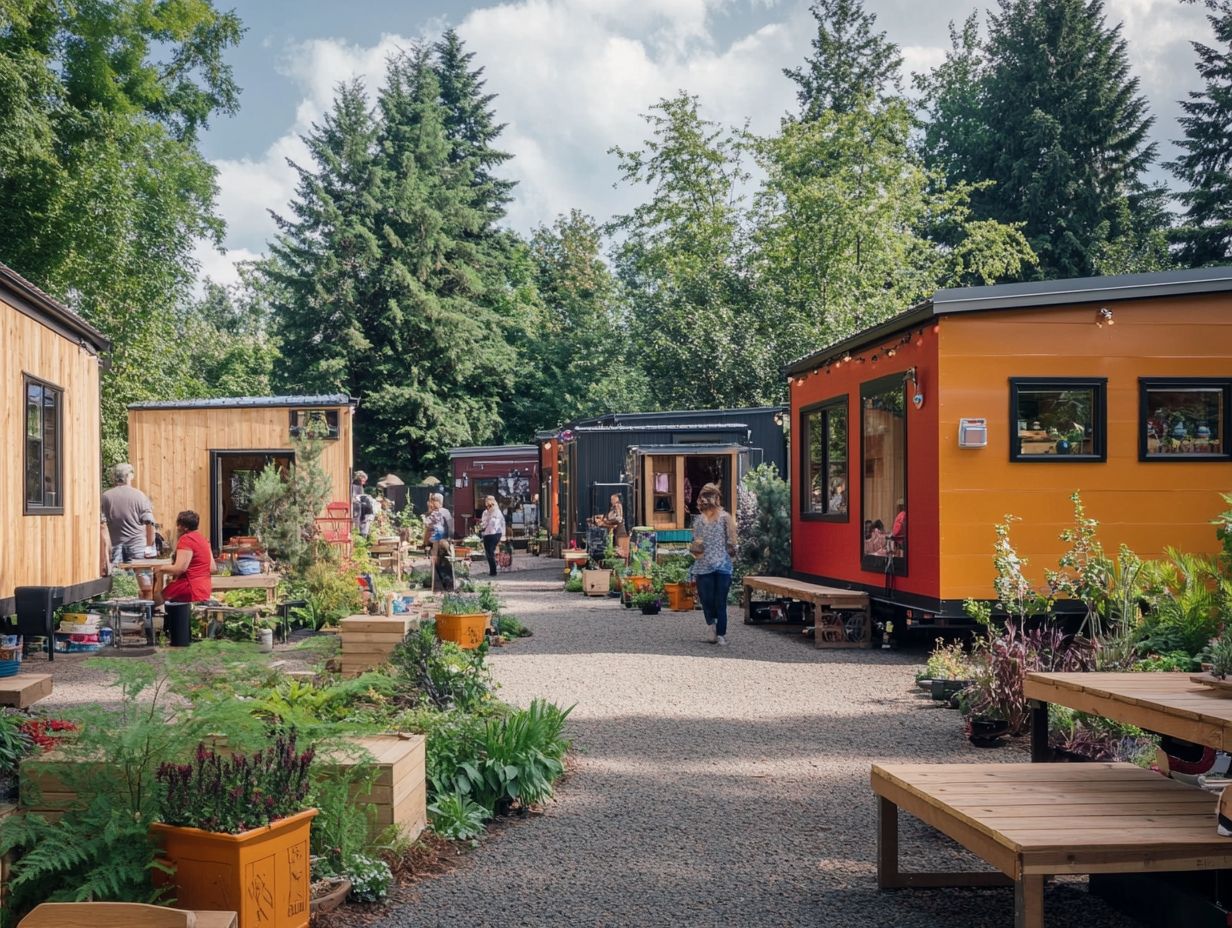
Collaborating with community members is vital for successfully establishing a tiny home community. It fosters engagement, encourages valuable feedback, and helps steer the development of housing solutions that genuinely reflect the needs and desires of the residents.
Get excited! Collaborating often means rolling up your sleeves for DIY projects, allowing you to participate in shaping your living environment and explore ideas like designing a tiny house for sustainability to make it truly your own.
Involving Residents in the Process
Involving residents in the development process of a tiny house community significantly enhances engagement and fosters a strong sense of ownership. As you contribute your ideas and feedback through various channels be it DIY projects or planning meetings you help shape a community that truly reflects sustainable practices and values.
By actively engaging residents like yourself, planners can uncover insights that might otherwise go unnoticed. This enables a design tailored specifically to the community’s needs. Utilizing feedback through surveys and workshops not only gives power to you but also cultivates a collaborative spirit, encouraging everyone to immerse themselves in the creative aspects of community building.
Fostering DIY initiatives allows individuals to showcase their unique skills, enriching both the physical environment and social connections within the neighborhood. These participatory methods, such as creating a tiny house zen space, create a profound sense of belonging while enhancing the overall energy and resilience of the tiny home community.
Maintaining and Sustaining the Community Space
Maintaining and sustaining the community space in a tiny house community is essential for its long-term viability. It demands your ongoing feedback and active participation to uphold the shared ethos and values that define the community.
This commitment to maintenance enhances aesthetic appeal. It also cultivates pride and responsibility among all members.
Tips for Long-Term Maintenance and Upkeep
Long-term maintenance and upkeep of a community space in a tiny house community require your commitment to regular assessments and proactive measures. This ensures that the environment remains inviting and functional for everyone.
Set up ways to collect feedback. Choose eco-friendly options to improve our gardens and common areas.
Join us at regular community meetings to share your ideas and collaborate with your neighbors. This is your opportunity to voice opinions, share ideas, and discuss potential improvements with fellow residents, including tips on finding affordable tiny house communities.
Embracing sustainable practices, which are methods that are environmentally friendly and conserve resources, like composting and rainwater harvesting, benefits the environment and cultivates a sense of ownership among residents. Implementing a rotation schedule for communal tasks, such as garden care and maintenance, ensures shared responsibilities while also fostering camaraderie. For those interested in communal living, understanding life in a tiny house community can provide valuable insights.
Incorporating native plants into garden design can significantly minimize water usage and reduce upkeep costs. This creates a harmonious, eco-friendly living space that everyone can appreciate and enjoy.
Frequently Asked Questions
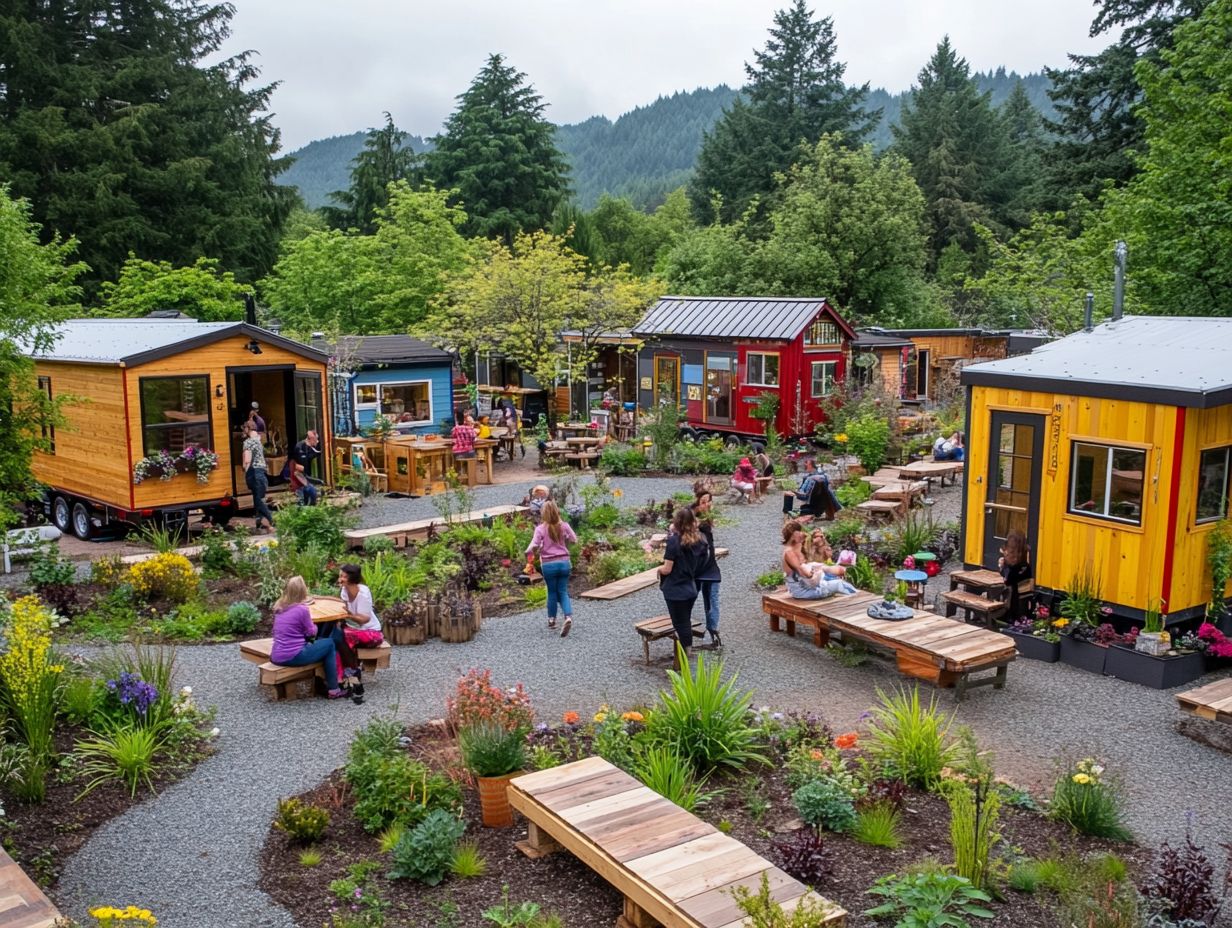
What is a Tiny House Community Space and why should I create one?
A Tiny House Community Space is a designated area within a tiny house community where residents can gather, socialize, and participate in community activities. It not only promotes a sense of community and belonging, but also encourages sustainable living practices and reduces the carbon footprint. Creating one can enhance the overall living experience for everyone in the community, especially for those pursuing their homeownership dream.
Do I need any special skills or knowledge to create a Tiny House Community Space?
No special skills or knowledge are needed to create a Tiny House Community Space. If you re passionate about community living and willing to learn, you can build a space that reflects the needs of your community.
What are some essential elements to consider when creating a Tiny House Community Space?
Consider the location, size, design, and functionality of the space. Be sure to incorporate community ideas and suggestions while following local building codes and zoning laws.
How can I involve the community in the process of creating a Tiny House Community Space?
Involve the community through meetings, surveys, or workshops. This engagement fosters a sense of ownership and ensures the space meets everyone’s needs.
What are some budget-friendly ways to create a Tiny House Community Space?
Creating a Tiny House Community Space can be affordable. Use recycled materials, seek donations from local businesses, or host fundraising events to gather resources.
How can I ensure the sustainability and longevity of a Tiny House Community Space?
Engage community members in maintenance efforts. Set regular cleaning schedules and have a plan in place for future repairs or updates to keep the space functional.

